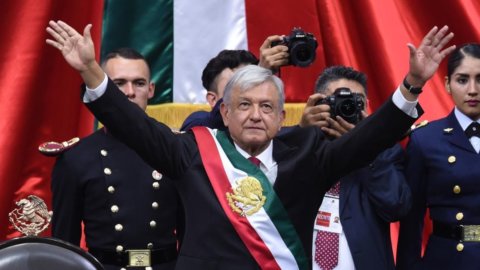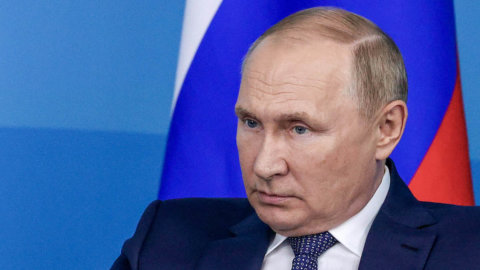Mexico is one of the countries in the world with the most deaths declared from Covid-19, around 75 at the end of September, to which the high number of infected must be associated. Among the causes also the policy of the government of Andrés Manuel López Obrador, often criticized for having been faster in removing social distancing measures than in implementing them. In essence, the Mexican president has not had a very different public position from that of the American Trump or the Brazilian Bolsonaro, prioritizing economic growth over public health. However, this attempt has not succeeded and, despite the high number of deaths, in 2020 Mexico's GDP will suffer a contraction of about 10%, according to the most recent estimates by the IMF.
That the contraction of Mexico's GDP in 2020 could be among the most severe in the world is partly explained by the government's fiscal policy choices which, according to the president, should not go into debt to help large private companies. Mexico was in the almost unique position of being able to spend to support aggregate demand: in fact, at the end of 2019 the country had both a low public budget deficit (2,3% of GDP) and a non-worrisome level of public debt ( 53,7% of GDP). The latest projections of the World Economic Outlook help to understand how little the Mexican government has done: the IMF calculates that in 2020 emerging countries responded to the pandemic on average with expenditure equal to around 5% of GDP, made up of around 2% by loans and guarantees for businesses and the rest from additional expenses and lower revenues. For Mexico, both forms of intervention are below 1% of GDP.
The austerity of the government's fiscal policy is also reflected in next year's budget: a small primary surplus of the public budget is forecast for both this year and 2021, illustrating how the government has no second thoughts about the choices it has made. The items in the budget that will increase the most are those for infrastructural expenses: the construction of the Treno Maya and the Santa Lucia airport, while the moderate public expenditure is justified by the president as necessary and functional for the reduction of corruption in the country. Faced with the decisions of the central government, the Mexican states that had the possibility intervened directly, for example by suspending taxation for companies; for its part, the private sector has sought resources elsewhere, for example by obtaining from the Inter-American Development Bank approximately $12 billion in loans to help small and medium-sized businesses to overcome the pandemic. The government therefore maintained its economic policy priorities, including infrastructural development, especially in the south of the country, one of the least developed parts, and support for the poorest sections of the population. The increase in the minimum wage, which has progressively grown over the last two years, has been joined during the pandemic by around 10 billion in public spending on programs specifically aimed at helping the poorest.
In this scenario, the Usmca entered into force on 1st July, the trade agreement that replaces the previous NAFTA and focuses on the implementation of international standards, seeking to promote best practices for all industrial sectors. The agreement, considered by analysts to be much more modern than NAFTA in the field of intellectual property, electronic commerce and the environment, was signed on November 30, 2018, in Buenos Aires, shortly before the opening of the G20 summit. Subsequently, on December 19, it was approved in the United States House of Representatives with 385 votes in favor and 41 against. About a month later, the Senate confirmed it by 89 to 10 votes. Trump officially signed the USMCA on January 29. In addition to Trump, Canadian Prime Minister Justin Trudeau and former Mexican President Enrique Peña Nieto wanted it. Although in many respects the new treaty is very similar to the previous one, in reality for some sectors, such as cars or textiles, the changes will be significant.
The main measures contained in the USMCA include:
· A level playing field for workers, including improved rules of origin for cars and trucks. In particular, the agreement focuses on exports of cars, aluminum and steel tariffs: the increase in environmental and labor regulations are aimed at stimulating the national production of cars and trucks.
· Benefits farmers and ranchers by modernizing and strengthening food and agriculture trade in North America.
· Supporting the economy through new protections for the intellectual property of data and guaranteeing an opportunity to exchange services with the introduction of a more streamlined certification to access preferential rates.
New chapters covering digital trade, anti-corruption and regulatory good practices: The agreement significantly addresses digital trade and prohibits the imposition of import duties on electronically distributed products. In addition, the new agreement protects web companies from liability for the content of their platforms and prohibits Canada and Mexico from requiring US companies operating there to store their data on domestic servers.
Other provisions with significant changes include labor, environmental stewardship, agricultural access, and state-investor dispute resolution. Importers will need to review their customs compliance programmes, especially for tariffs and certificates of origin. As for tariffs, all products with zero tariffs under NAFTA will also remain zero under USMCA. In addition, Canada will provide new and expanded access to several categories of US dairy products including: milk, cheese, cream, skimmed milk powder, condensed milk, yogurt, while also eliminating duties on whey and margarine.
The Usmca no longer requires a certificate of origin, but it is necessary to present a minimum set of elements as proof, also present in an invoice or in any other document. Thus, importers must maintain specific elements in their files to support each shipment. It is also possible to submit a request for preferential tariff treatment, based on a certification of origin, completed by the importer, exporter or manufacturer in order to certify that a good qualifies as an "originating good": this can be completed and submitted electronically with a electronic or digital signature and concern one or more imports of identical goods, within a maximum period of 12 months.
The importer is required to pay reasonable attention to the accuracy of all documentation submitted to US Customs and Border Protection (CBP). The nine elements required as a minimum to claim origin in Usmca are:
· Importer, exporter or manufacturer, indicating the certifier
· Name and address of the certifier
· Name and address of the exporter
· Name and address of the manufacturer
· Name and address of the importer, if known · Description of the good and indication of the 6-digit tariff identified in the Harmonized System Tariff Classification
· Specific criteria on the basis of which the asset satisfies the Usmca origin requirements
· Period of coverage, where the certification is valid up to 12 months in the case of multiple shipments of identical goods
· Authorized signature and date
No certification is required for imports up to $2.500.





